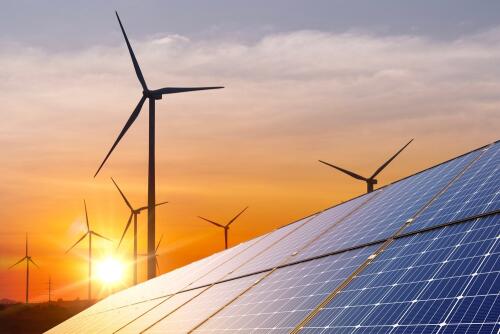Buone notizie
In the month of May, in Italy, over half of the energy demand was produced by renewable sources, marking the highest monthly value ever.This was announced yesterday by Terna, the public company that manages the electricity grid, which certified that last month renewable sources specifically covered 52.5% of Italian electricity demand, over 10% more than the May 2023, in which 42.3% was recorded. The data is only the latest stage of a trend that seems to be emerging very clearly.In fact, in the phase between January and May 2024, the renewable capacity in operation in Italy has view an increase of 3,015 Gigawatts, or 42% more than in the same time frame in 2023. The government's plans for 2024 are to reach 8 Gigawatts.Specifically, in May 2024, compared to the same month of the previous year, there was an increase in hydroelectric (+34.7%), wind (+10.5%) and photovoltaic (+36.3 %).The latter, according to what was reconstructed by Terna, is the result of the increase in operating capaci...
Seven wild horses have been reintroduced to the steppe of Kazakhstan, where they had been missing for at least two centuries.The specimens are Przewalski's horses, also called Mongolian wild horses or takhi.Four of them come from the Berlin Zoo, while three others from the Prague Zoo.According to the director of the zoo of the latter city, the reintroduction in question represents a "event of historical importance".Once they arrive at their destination, the equines will be kept for a year in an area where they can get used to coexistence with each other and to the new climatic and environmental conditions, all under the strict supervision of a group of experts.Subsequently, they will be released into the wild, where they will make a positive contribution in ecological terms, both for the fauna and flora of the steppe. Przewalski horses (in Kazakh known as Kertagy or Kerkulan) I am the last species of genetically wild horse left in the world.The species completely stopped exis...
In Italy, last April, renewable energies satisfied more than half of the national electricity demand.Exceeding the overall contribution of fossil sources, clean sources have satisfied 51.2% of energy needs, against 34.2% coming from non-renewable sources, while the foreign balance took over to satisfy the remaining needs.To make it known the relationship Terna monthly.In particular, the photovoltaic source alone satisfied 30.8% of the total renewable electricity generation, followed by hydroelectric (37.7%) and wind (17.4%).Geothermal and biomass heat, however, are stable. Compared to the same month of 2023, the production of electricity from renewable sources thus recorded a +43,8%, while the renewable capacity in operation increased by 45%, recording a growth of 2,356 MW.In particular, there has been a notable increase renewable hydroelectric production (+197.5%), while the photovoltaic one is increasing by almost 20%.Broadening our gaze, according to what is reported in the report,...
In the global energy mix, renewable energy sources have gone from 19% in 2000 to over 30% in 2023, thanks to the increase in solar and wind energy, going from 0.2% in 2000 to 13.4% in 2023 .Thus, last year, the carbon intensity of global electricity generation reached a new historic low, 12% lower than the peak in 2007.The fifth Global Electricity Review by the Ember energy expert group was responsible for reporting these data.The document covers electricity data from 215 countries, as well as the latest 2023 data for 80 countries accounting for 92% of global electricity demand.For the first time - the report certified - the global energy system was able to count on almost a third of electricity generated from clean sources. Inside the relationship we read that “the renewable energy revolution, led by solar and wind, is breaking all records and favoring increasingly cleaner electricity production” and that “the world is now at an inflection point where solar and wind...
A new study recently published in the prestigious journal Science confirmed that the strategies of conservation they work in protecting biodiversity.In particular, the analysis considered 186 case studies to evaluate the impact of the interventions conservation globally over the last century.Specifically, the research highlighted the effectiveness of various strategies conservation, such as controlling invasive species, restoring habitats and creating protected areas, in different geographic locations and in different ecosystems and political systems.The actions of conservation, it turns out, have improved or slowed the decline of species in over two thirds of the cases analyzed.“Our study shows that when conservation actions work, they really work – said Jake Bicknell, co-author of the work and conservation scientist at the University of Kent in the United Kingdom – in other words, they often lead to outcomes for biodiversity that they are not just a little bett...




